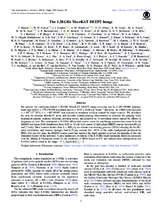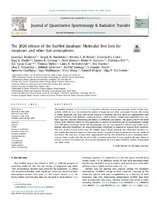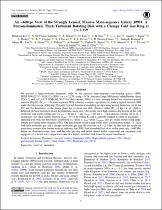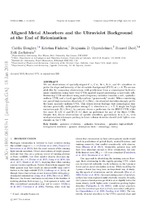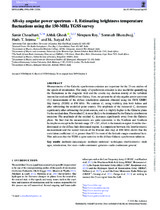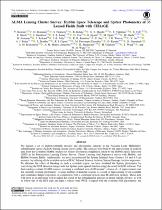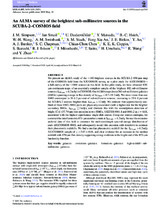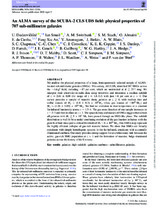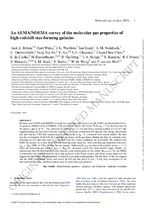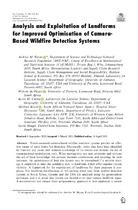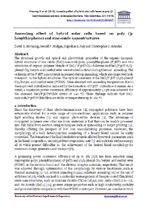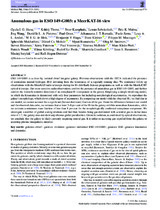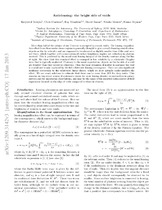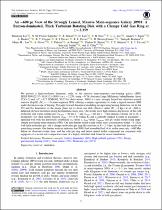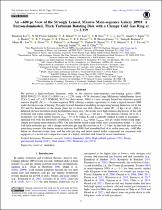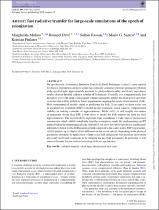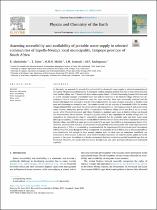Browsing Research Articles (Physics) by Title
Now showing items 1-20 of 510
-
The 1.28 GHz MeerKAT DEEP2 Image
(2020)We present the confusion-limited 1.28 GHz MeerKAT DEEP2 image covering one qb » ¢ 68 FWHM primarybeam area with θ = 7 6 FWHM resolution and s = m - n 0.55 0.01 Jy beam 1 rms noise. Its J2000 center position α = 04h 13m ... -
The 2020 release of the ExoMol database: Molecular line lists for exoplanet and other hot atmospheres
(Elsevier, 2020)The ExoMol database (www.exomol.com) provides molecular data for spectroscopic studies of hot atmospheres. While the data are intended for studies of exoplanets and other astronomical bodies, the dataset is widely applicable. ... -
An ∼600 pc view of the strongly lensed, massive main-sequence galaxy J0901: a baryon-dominated, thick turbulent rotating disk with a clumpy cold gas ring at z = 2.259
(The astrophysical journal, 2023)We present a high-resolution kinematic study of the massive main-sequence star-forming galaxy (SFG) SDSS J090122.37+181432.3 (J0901) at z = 2.259, using ∼0.″36 Atacama Large Millimeter/submillimeter Array CO(3-2) and ... -
Aligned metal absorbers and the ultraviolet background at the end of reionization
(Oxford University Press, 2018)We use observations of spatially-aligned C ii, C iv, Si ii, Si iv, and O i absorbers to probe the slope and intensity of the ultraviolet background (UVB) at z ∼ 6. We accom- plish this by comparing observations with ... -
All-sky angular power spectrum – I. Estimating brightness temperature fluctuations using the 150-MHz TGSS survey
(Oxford University Press, 2020)Measurements of the Galactic synchrotron emission are important for the 21-cm studies of the epoch of reionization. The study of synchrotron emission is also useful for quantifying the fluctuations in the magnetic field ... -
ALMA lensing cluster survey: Hubble space telescope and spitzer photometry of 33 lensed fields built with CHArGE
(IOP Publishing, 2022)We present a set of multiwavelength mosaics and photometric catalogs in the Atacama Large Millimeter/submillimeter Array (ALMA) lensing cluster survey fields. The catalogs were built by the reprocessing of archival data ... -
An ALMA survey of the brightest sub-millimetre sources in the SCUBA-2–COSMOS field
(Oxford University Press, 2020)ABSTRACT We present an ALMA study of the ∼180 brightest sources in the SCUBA-2 850-μm map of the COSMOS field from the S2COSMOS survey, as a pilot study for AS2COSMOS – a full survey of the ∼1000 sources in this field. ... -
An ALMA survey of the SCUBA-2 CLS UDS field: Physical properties of 707 sub-millimetre galaxies
(Oxford University Press, 2020)We analyse the physical properties of a large, homogeneously selected sample of ALMA-located sub-millimetre galaxies (SMGs). This survey, AS2UDS, identified 707 SMGs across the ∼1 deg2 field, including ∼17 per cent, which ... -
An ALMA/NOEMA survey of the molecular gas properties of high-redshift star-forming galaxies
(Oxford University Press, 2021)We have used ALMA and NOEMA to study the molecular gas reservoirs in 61 ALMA-identified submillimetre galaxies (SMGs) in the COSMOS, UDS, and ECDFS fields. We detect 12CO (Jup = 2-5) emission lines in 50 sources, and [C ... -
The altitude of sprites observed over South Africa
(Academy of Science of South Africa, 2021)Sprites are mesospheric optical emissions that are mostly produced by large, positive cloud-to-ground lightning discharges. Sprites appear in different morphologies such as carrot, jellyfish and column, and are typically ... -
Analysis and exploitation of landforms for improved optimisation of camera based wildfire detection systems
(Springer, 2021)Tower-mounted camera-based wildfire detection systems provide an effective means of early forest fire detection. Historically, tower sites have been identified by foresters and locals with intimate knowledge of the terrain ... -
Annealing effect of hybrid solar cells based on poly (3-hexylthiophene) and zinc-oxide nanostructures
(Elsevier, 2013)The structural growth and optical and photovoltaic properties of the organic–inorganic hybrid structures of zinc oxide (ZnO)-nanorods/poly-3-hexylthiophene (P3HT) and two variations of organic polymer blends of ZnO/ ... -
Anomalous gas in ESO 149-G003: A MeerKAT-16 view
(Oxford University Press, 2021)ESO 149-G003 is a close-by, isolated dwarf irregular galaxy. Previous observations with the ATCA indicated the presence of anomalous neutral hydrogen (H I) deviating from the kinematics of a regularly rotating disc. We ... -
Antenna beam characterization for the global 21-cm experiment LEDA and its impact on signal model parameter reconstruction
(Oxford University Press, 2022)Cosmic dawn, the onset of star formation in the early universe, can in principle be studied via the 21-cm transition of neutral hydrogen, for which a sky-averaged absorption signal, redshifted to MHz frequencies, is predicted ... -
Anti-lensing: the bright side of voids
(American Physical Society, 2013)More than half of the volume of our Universe is occupied by cosmic voids. The lensing magni ca- tion e ect from those under-dense regions is generally thought to give a small dimming contribution: objects on the far side ... -
An∼600 pc View of the Strongly Lensed, Massive Main-sequence Galaxy J0901: A Baryon-dominated, Thick Turbulent Rotating Disk with a Clumpy Cold Gas Ring at z=2.259
(Institute of Physics, 2023)We present a high-resolution kinematic study of the massive main-sequence star-forming galaxy (SFG) SDSS J090122.37+181432.3 (J0901) at z = 2.259, using ∼0 36 Atacama Large Millimeter/submillimeter Array CO(3–2) and ∼0 ... -
An∼600 pc view of the strongly lensed, massive main-sequence galaxy j0901: A baryon-dominated, thick turbulent rotating disk with a clumpy cold gas ring at z=2.259
(American Astronomical Society, 2023)We present a high-resolution kinematic study of the massive main-sequence star-forming galaxy (SFG) SDSS J090122.37+181432.3 (J0901) at z = 2.259, using ∼0 36 Atacama Large Millimeter/submillimeter Array CO(3–2) and ∼0 ... -
Artist: Fast radiative transfer for large-scale simulations of the epoch of reionization
(Oxford University Press, 2019)We introduce the ‘Asymmetric Radiative Transfer In Shells Technique’ (ARTIST), a new method for photon propagation on large scales that explicitly conserves photons, propagates photons at the speed of light, approximately ... -
An askap survey for hi absorption towards dust-obscured quasars
(Oxford Academic, 2019)Obscuration of quasars by accreted gas and dust, or dusty intervening galaxies, can cause active galactic nuclei (AGN) to be missed in optically selected surveys. Radio observations can overcome this dust bias. In particular, ... -
Assessing accessibility and availability of portable water supply in selected communities of Lepelle-Nkumpi local municipality, Limpopo province of South Africa
(elsevier, 2022)In this study, we assessed the accessibility and availability of portable water supply in selected communities of the Lepelle-Nkumpi Local Municipality. A systematic random sampling method was used to select 49 households ...

